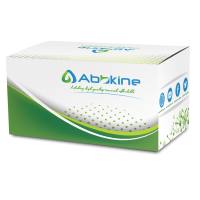Genetic Transformation of Bacteroides spp. Using Electroporation
互联网
632
The greatest progress in development of methods for genetic manipulation of obligate anaerobic bacteria has been with the Bacteroides and Clostridium , which have become the model systems for gram-negative and gram-positive anaerobes, respectively. Advancement in the design of genetic systems for use with Bacteroides has followed a predictable pathway. These are predominant members of the gastrointestinal tract microflora of mammals, but many species also can be significant opportunistic pathogens. As pathogens, the Bacteroides are difficult to treat because of inherent resistance to many commonly used antibiotics and because of acquired resistance to some of the currently effective drugs. Thus, much of the work on Bacteroides genetics focused on analysis of transmissible antibiotic resistance determinants, and these resistance elements have in turn provided many of the plasmids and selective markers used in the development of Bacteroides genetics (1 –3 ). It is important to note that the Bacteroides antibiotic resistance elements are in fact required components of genetic tools used in these organisms, because few if any genes or plasmids from other bacterial species function in the Bacteroides (4 ).









